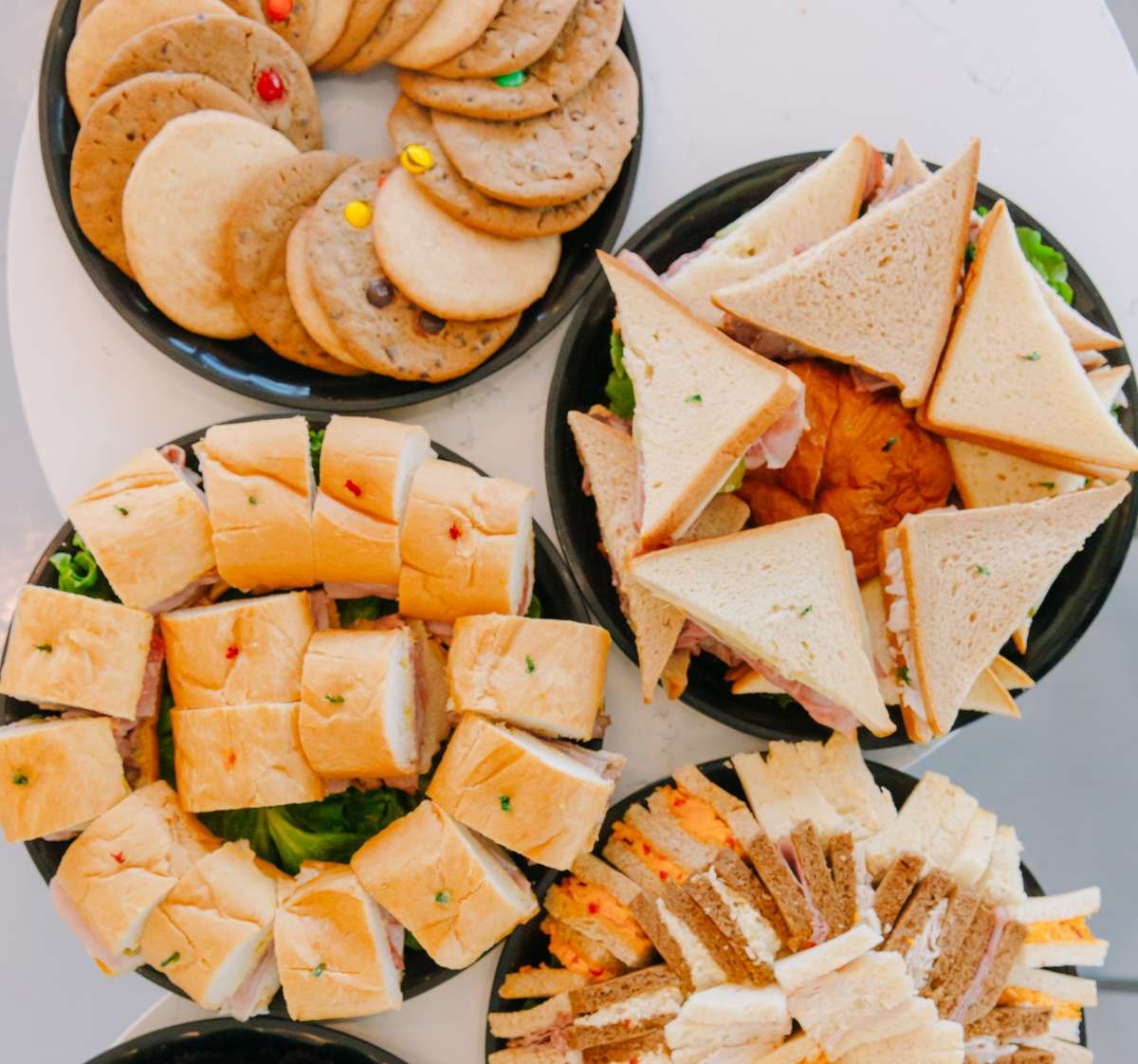Comprehending the Art of Bakeshop Products: From Fresh Baked Breads to Tempting Pastries and Finger Foods
From the science behind the best loaf of bread, where fermentation and gluten growth play crucial duties, to the finesse required for developing split breads, each element reveals a compelling story of workmanship. The convenience of finger foods highlights just how flavor and texture can be artfully combined to engage varied preference preferences.
The Science of Bread Making
At the heart of every loaf of bread lies a fascinating interaction of chemistry and biology. The process of bread making begins with the combination of flour, salt, water, and yeast-- each ingredient playing a vital function in the last item.
Yeast, a living microorganism, ferments the sugars existing in the flour, generating co2 and alcohol while doing so. The carbon dioxide gas develops bubbles in the dough, triggering it to rise and establish a light structure. The temperature level and moisture throughout fermentation substantially influence yeast activity and, consequently, the bread's taste and structure.

Learning Bread Methods
Just how can one attain the fragile equilibrium of texture and taste that specifies outstanding pastry? Grasping pastry methods needs a deep understanding of ingredients, approaches, and the science behind them. Basic to this craft is the option of top quality active ingredients-- flour, butter, sugar, and eggs-- each playing an important function in the final product's flavor and structure.
The strategy of lamination, which entails folding layers of dough and butter, develops the wanted flakiness in pastries like croissants and puff bread. Accuracy in temperature is essential, as butter should continue to be chilly to make certain optimum layers. Correct blending methods, such as the creaming strategy for cakes, guarantee also consolidation of air and fat, resulting in a light and airy crumb.
Furthermore, keeping the right moisture levels during baking can substantially impact the outcome, ensuring that breads increase correctly and achieve that golden-brown surface. Lastly, the art of bread likewise requires perseverance and practice; each attempt improves one's ability and understanding of the detailed equilibrium called for to create alluring breads that delight the senses. Mastery in these methods ultimately distinguishes a competent bread cook from an amateur.
Kinds Of Finger Foods
The globe of culinary thrills prolongs past breads to include a wide range of finger foods, which are commemorated for their comfort and convenience. These bite-sized treats are best for celebrations, offering an array of flavors and structures that satisfy diverse tastes.

On the sweeter side, bite-sized cupcakes and tiny tarts offer a fascinating coating to any type of dish, interesting those with a wonderful tooth. Cheese and charcuterie boards serve as an innovative choice, enabling visitors to personalize their attacks with an assortment of meats, cheeses, fruits, and nuts.
Taste Profiles in Cooking
Cooking is an elaborate dancing of taste profiles that integrates pleasant, full-flavored, and umami notes to create an unified experience for the taste buds. Comprehending these accounts is vital for bakers looking for to raise their productions.
Active ingredients such as delicious chocolate and caramel present complex pleasant notes that can either dominate or complement various other tastes. Active ingredients like seasonings, cheeses, and herbs can transform a basic dough into a diverse flavor experience.
Umami, frequently ignored in baking, plays a significant function in enriching tastes. Components such as aged cheeses, fermented products, and even particular nuts add to a mouthwatering depth that boosts total taste.
Additionally, the interaction of acidity from ingredients like buttermilk or citrus enthusiasm can brighten flavors, using a revitalizing counterpoint to sweet taste. By thoughtfully combining these taste profiles, bakers can craft products that resonate with varied tastes buds, creating a memorable see cooking experience. Inevitably, mastering flavor profiles is key to innovation on the planet of cooking.
Crucial Cooking Devices and Active Ingredients
Recognizing taste accounts in cooking collections the stage for picking the right tools and components that promote the development of extraordinary baked products. The foundation of effective baking hinge on having important devices available. Secret things include mixing bowls, determining mugs, and spoons for precision, in addition to a durable stand mixer or hand mixer for easy blending. A trusted collection of cooking pans-- such as sheet frying pans, loaf frying pans, and cake pans-- is vital for achieving desired forms and textures.
Flour offers as the foundation of a lot of dishes; choosing the ideal type-- be it all-purpose, bread, or bread flour-- can substantially influence the result. Baking powder and baking soda are crucial for developing lift in breads and cakes.
In addition, incorporating taste enhancers like vanilla essence, seasonings, and citrus zest can boost your productions. By guaranteeing access to these essential devices and active ingredients, bakers can with confidence start their cooking journey, crafting a varied variety of delightful baked goods.
Final Thought
Finally, the art of bakeshop products encompasses a profound understanding of both creative methods and scientific principles. Mastery in bread production, pastry preparation, and finger food presentation discloses the intricate relationships between processes and active ingredients. Furthermore, exploring varied taste accounts enhances the baking experience, while crucial devices and components provide the structure for success. Eventually, the enchanting world helpful resources of cooking thrives on the harmonious interaction of science and creativity, leading to a myriad of fascinating cooking creations.
Exactly how can one achieve the delicate balance of structure and taste that defines exceptional pastry? Essential to this craft is the selection of premium active ingredients-- flour, butter, sugar, and eggs-- each playing an essential function in the final product's taste and appearance.

Understanding flavor accounts in cooking sets the stage for selecting the right devices and ingredients that help with the development of extraordinary baked items. Discovering diverse taste accounts improves the baking experience, while important tools and active ingredients provide the foundation for success.